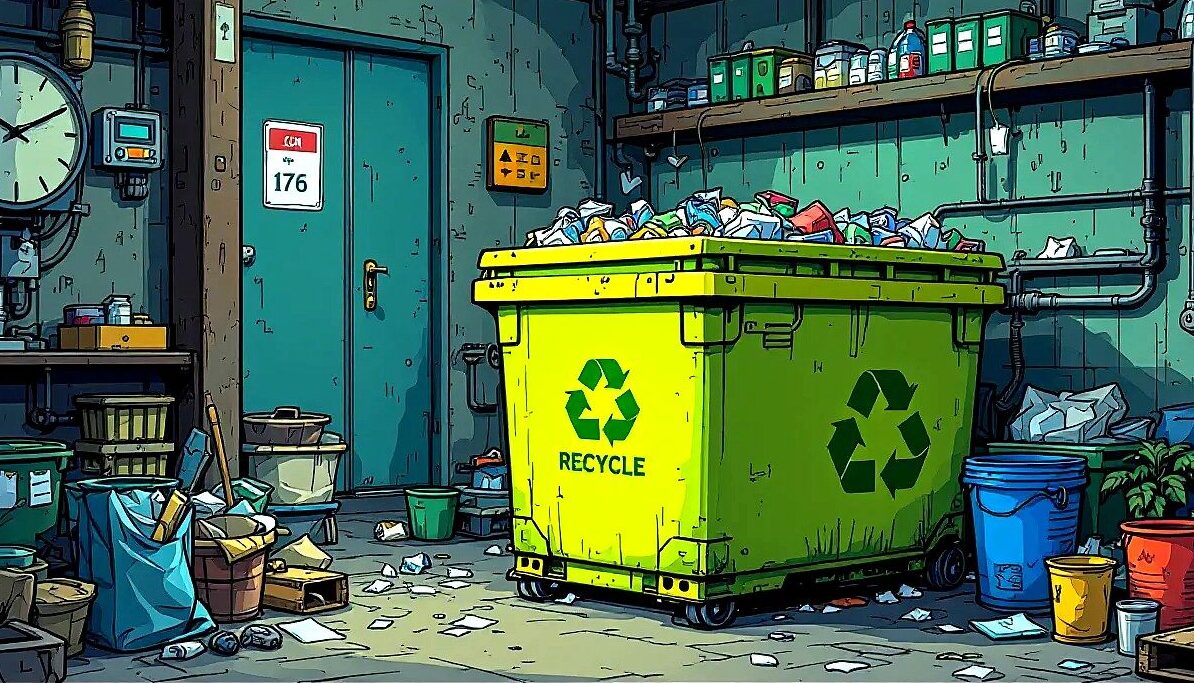AI for sustainability is becoming an essential part of our global effort to address environmental challenges. The conversation around sustainability has become increasingly urgent as we grapple with the consequences of climate change and environmental degradation. As we search for solutions to these pressing issues, Artificial Intelligence has emerged as a powerful tool that can help us navigate the complex challenges we face. This Earth Day, we will explore how AI can be used to optimize energy consumption, integrate renewable energy sources, revolutionize waste management, mitigate climate change, and support sustainable agriculture, among other applications.
1. Energy Efficiency and Renewable Energy Integration
AI can optimize energy consumption and integrate renewable energy sources for a more sustainable future. By analyzing data on energy usage patterns, AI can identify areas for improvement and help businesses and households reduce their carbon footprint. Furthermore, AI can predict energy demand and supply, allowing for better integration of renewable energy sources like wind and solar power. This can lead to a more reliable and efficient energy grid that reduces our reliance on fossil fuels.
The integration of renewable energy sources is crucial for mitigating climate change and reducing greenhouse gas emissions. AI can play a significant role in optimizing the use of these sources by predicting energy demand and supply more accurately. By doing so, AI can help ensure that renewable energy sources are utilized efficiently, reducing the need for fossil fuel-based power plants.

2. AI in Waste Management and Circular Economy
AI is revolutionizing waste management by automating sorting, predicting production, and improving recycling processes. By analyzing images of waste, AI can quickly and accurately sort materials for recycling, reducing contamination and increasing the efficiency of recycling facilities. Additionally, AI can predict waste production patterns and optimize collection routes, reducing the amount of waste that ends up in landfills. This can help create a more circular economy, where waste is seen as a resource rather than a burden.
The circular economy is a concept that aims to minimize waste and maximize the use of resources. By using AI to improve recycling processes and reduce waste production, we can move closer to achieving a more sustainable and resource-efficient society.
3. AI and Climate Change Mitigation and Adaptation
AI is helping predict climate patterns, prevent disasters, and monitor wildlife populations for effective conservation efforts. By analyzing vast amounts of climate data, AI can help scientists and policymakers develop more accurate climate models and predict future climate patterns. This can help us better prepare for and adapt to the impacts of climate change. Additionally, AI can help monitor wildlife populations, track deforestation, and identify areas at risk of natural disasters, allowing for more targeted and effective conservation efforts.
The ability of AI to predict climate patterns and monitor wildlife populations can help us better understand the impacts of climate change and develop more effective strategies for mitigating and adapting to its effects. By doing so, AI can play a crucial role in protecting our planet for future generations.

4. AI in Sustainable Agriculture
AI can analyze soil data, predict crop yields, and identify pest and disease outbreaks for sustainable farming practices. By using data from sensors and satellite imagery, AI can provide farmers with real-time insights into their crops, helping them make more informed decisions about when to plant, water, and harvest. Additionally, AI can help farmers identify and prevent pest and disease outbreaks before they spread, reducing the need for harmful pesticides and other chemicals.
Sustainable agriculture is crucial for mitigating climate change and reducing the environmental impact of food production. By using AI to optimize crop yields and reduce the use of harmful chemicals, we can move closer to achieving a more sustainable and environmentally friendly food system.
5. AI in Climate Modeling and Environmental Monitoring
AI enhances predictive accuracy, real-time analysis, and resource optimization for a more sustainable environment. By analyzing climate data, AI can help scientists develop more accurate climate models, which can help us better understand the impacts of climate change and develop more effective strategies for mitigating and adapting to its effects. Furthermore, AI can help monitor environmental factors like air and water quality, allowing for real-time analysis and resource optimization, which can lead to a cleaner and healthier planet.
The use of AI in climate modeling and environmental monitoring can help us better understand the impacts of climate change and develop more effective strategies for mitigating and adapting to its effects. By doing so, AI can play a crucial role in protecting our planet for future generations.
Conclusion
As we strive to build a more sustainable future, AI has the potential to play a key role in addressing the complex challenges we face. By optimizing energy consumption, integrating renewable energy sources, revolutionizing waste management, mitigating climate change, and supporting sustainable agriculture, among other applications, AI can help to create a more sustainable and resilient world for future generations. As we harness the power of AI for sustainability, it is important to consider the environmental consequences of rapid development and deployment of powerful generative AI models. By accelerating the discovery and development of sustainability solutions, such as low-carbon materials and renewable energy production, we can work towards a more sustainable future.
Ultimately, the key to unlocking the full potential of AI for sustainability lies in our ability to leverage its power responsibly and strategically. By embracing these technologies and working together to address the challenges we face, we can create a greener, more sustainable planet for all. Happy Earth Day!
References
Abstrabit Technologies. (2024, November 21). Discover how AI and machine learning are transforming sustainable development by addressing key environmental challenges for a greener future. Linkedin.com. https://www.linkedin.com/pulse/ai-sustainable-development-solving-environmental-challenges-2ax0c/
AI in Climate Modeling and Environmental Monitoring – LUNARTECH. (2021). Lunartech.ai. https://www.lunartech.ai/blog/ai-in-climate-modeling-and-environmental-monitoring
Faiza Fatma. (2025, March 30). 10 applications and use cases of artificial intelligence for sustainability. Green Ubuntu. http://greenubuntu.com/10-applications-and-use-cases-of-artificial-intelligence-for-sustainability/
Genghini, L. (2023, October 3). 8 Ways Artificial Intelligence Can Contribute to Environmental Conservation – 2030.Builders. 2030.Builders. https://2030.builders/8-ways-ai-can-contribute-to-environmental-conservation/
Martijn Assie. (2025, February 11). The Role of AI in Environmental Conservation Efforts 🌍🤖. Medium. https://medium.com/@mail_18109/the-role-of-ai-in-environmental-conservation-efforts-1348db81d7b1




